The church of St Mary in Haynes is situated in Church End some distance to the south-west of the main village of Haynes itself. The church is signposted to the north of Church End Road and has a car park next to the church.
Website: Haynes Church
Patron Saint: St Mary
View Bedfordshire Parish Churches in a larger map
The church consists of a chancel and nave, north and south aisles with a west tower. There is a south porch, north and south chapels and vestry. Most of the external appearance of the church dates from extensive restoration or rebuilding from 1850 although the late C14 west tower remains.
Originally the church did not have a sloping roof over the nave and paintings from before the restoration show the chancel roof much as it is now but with a much lower flat and crenelated nave only slightly higher than the porch of the time.

The east end of the south aisle is occupied by the Carteret Chapel. Lord John Thynne (1772-1849) was the 3rd Baron Carteret who was a British peer and politician in the reign of George III.
He died childless and the title became extinct. On his death the estate passed to his nephew the Reverend Lord John Thynne.

The chapel has an east window of two trefoiled lights under a two-centred arch with a quatrefoil design in the head.
The south wall of the gabled chapel has two single light trefoiled windows under pointed arches and above there is a large rose window with a Star of David design in the tracery.
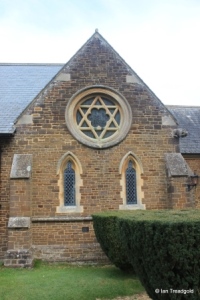
The south aisle has three windows to the south.
The south porch was rebuilt as part of the 1850 rebuilding and is quite pointed with low side walls without windows, the slope of the roof matching that of the Carteret Chapel.


The eastern and western are the same with two trefoiled lights under a pointed arch with a quatrefoil design in the head.
The third window on the south side, to the west of the porch is similar but with cinquefoiled lights and a cusped design in the tracery above.


The west tower is, externally, the only original part of the church, dating from C14.
The tower is crenelated with angle buttresses and an octagonal stair turret in the south-west corner built into the buttresses.
The belfry openings are of two lights with those to the north, south and east being trefoiled with a quatrefoil design above.
The west opening has a mullion below the trefoil design with plain tracery above.


The restored west window is of two flattened trefoil lights with a quatrefoil above under a pointed arch.
The west door may date from the 1850 rebuilding work.
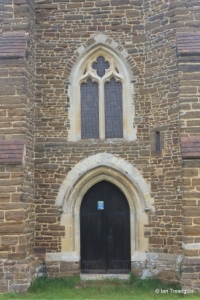
The north aisle is not symmetrical with the south in terms of the placement of the windows and door. There is a similar single light window in the west end of the aisle. The north aisle has two windows to the east of the door and one to the west, the opposite of the south aisle.
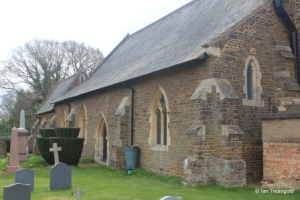

The eastern and western windows on the north side match and match the eastern and western windows on the south side with two trefoiled lights under a pointed arch with a quatrefoil design in the head.
The north doorway is under a pointed arch with corbels. The window to the west of the door matches the middle window on the south although its position relative to the door is reversed.
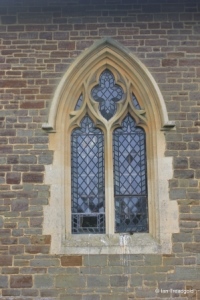



On the north side of the chancel, is the Thynne Chantry dedicated to, confusingly, Rev. Lord John Thynne the nephew of Baron Carteret mentioned earlier.
This John Thynne was responsible for the rebuilding works in the church in 1850.
The vestry on the north side of the chancel has a north facing door, and single lancet window with another single light trefoiled window on the east end.
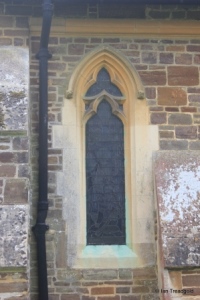
The Chantry has two single light trefoiled windows with a trefoil design above.
High on the east wall of the Chantry is a rose window, a characteristic of the architect of the restorations in 1850, Henry Woodyer of Guildford.
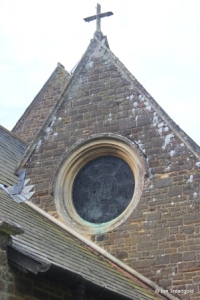
The east window of the church is of three trefoiled lights with geometric tracery above under a pointed arch with a peak being reminiscent of an ogee arch.
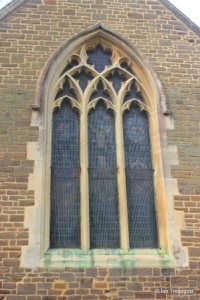
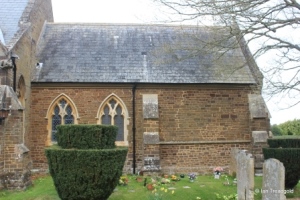
The south side of the chancel has two windows to the west both of two elongated trefoiled lights under two-centred arches with a dagger design in the tracery.

Page last changed 23/04/2020.

